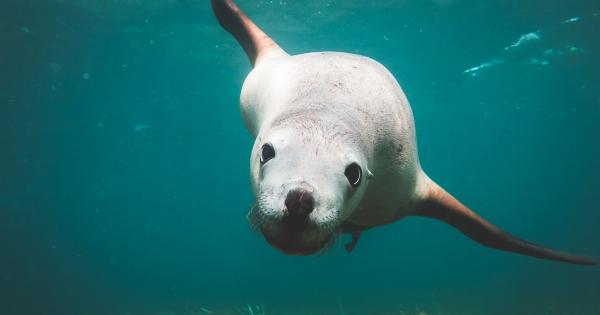Dogs love the water, and the beach is one of their favorite spots to cool off in the hot summer sun. However, as a responsible pet owner, you need to be aware of the potential dangers that seawater can pose to your furry friend.
1. Saltwater Poisoning
One of the biggest dangers of seawater for dogs is saltwater poisoning. Saltwater contains high levels of salt, which can dehydrate your dog and cause a host of other health problems.
Symptoms of saltwater poisoning include vomiting, diarrhea, lethargy, and seizures. In severe cases, saltwater poisoning can be fatal.
2. Dangerous Marine Life
The ocean is home to a variety of marine life, some of which can be dangerous to your dog.
Jellyfish and Portuguese man-o-war can cause severe allergic reactions, while sharks and stingrays can cause serious injuries with their sharp teeth and venomous barbs. Even harmless-looking crabs can pinch your dog’s nose or tongue and cause painful injuries.
3. Bacteria and Parasites
Seawater can also contain harmful bacteria and parasites that can infect your dog. Leptospirosis, for example, is a bacterial infection that can cause fever, vomiting, and liver and kidney damage.
Parasites like hookworms can also be transmitted through contact with contaminated seawater.
4. Dehydration
While dogs love to play in the water, they also need fresh water to drink to stay properly hydrated. Drinking seawater can actually increase your dog’s thirst and lead to dehydration, which can cause serious health problems if left untreated.
5. Swimmers Ear
Dogs that love to swim in the ocean are also at risk of developing swimmer’s ear. This condition is caused by water trapped in the ear canal, which can create an ideal breeding ground for bacteria and yeast.
Symptoms of swimmer’s ear include itching, redness, and discharge from the ear.
6. Sunburn
Just like humans, dogs can also get sunburned from spending too much time in the sun. This is especially true for dogs with light-colored coats or thin fur. To protect your dog from the sun, apply sunscreen to their skin and provide plenty of shade.
7. Heatstroke
Finally, spending too much time in the sun and seawater can also increase your dog’s risk of heatstroke. Dogs can’t sweat like humans and can only pant to regulate their body temperature.
If a dog is panting excessively, seeming lethargic or disoriented, or their tongue is very dark red or purple, it’s important to get them to a cool place and rehydrate them immediately.
In conclusion, the ocean can be a fun and enjoyable place for dogs, but it’s important to be aware of the potential dangers that seawater can pose.
Taking steps to protect your dog and keep them safe while they play in the water can help ensure that everyone has a fun and safe time at the beach.





























